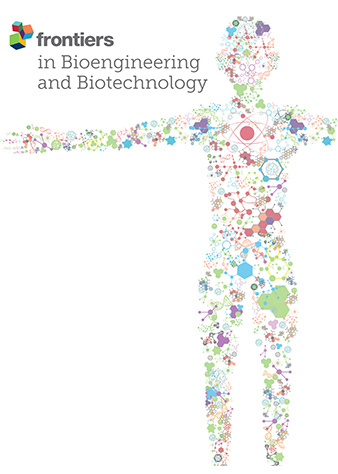从动脉杆菌生物质中一步提取苎麻素 S 的高效工艺
IF 4.3
3区 工程技术
Q1 BIOTECHNOLOGY & APPLIED MICROBIOLOGY
引用次数: 0
摘要
目前,苎麻素 S(GR-S)是通过酶法生产的,但存在三氟乙酸(TFA)的缺点,或者是通过发酵生产的,涉及多个分离和纯化步骤。因此,本研究侧重于使用绿色溶剂作为独特的萃取步骤,从茴芹芽孢杆菌的微生物生物质中生产苎麻素 S。在乙醇、酸性乙醇或缓冲磷酸盐等测试溶剂中,酸性乙醇的提取效果最好,从细胞中提取出 96% 的苎麻素 S,纯度达 90%。使用酸性乙醇时,萃取时间在 30-120 分钟范围内对苎麻素 S 产量的影响最小,而生物质与萃取剂的比例则成为关键参数。使用傅立叶变换红外光谱法(FTIR)、基质辅助激光解吸/电离飞行时间质谱法(MALDI-TOF-MS)、电喷雾电离质谱法(ESI-MS)和超高效液相色谱法(UPLC)对苎麻素 S 提取物进行了表征,并与商用苎麻素 S 进行了比较。本文章由计算机程序翻译,如有差异,请以英文原文为准。
Efficient one step extraction process of Gramicidin S from Aneurinibacillus aneurinilyticus biomass
Currently, Gramicidin S (GR-S) is produced enzymatically with the drawback of the presence of trifluoroacetic acid (TFA) or produced by fermentation involving several separation and purification steps. Therefore, this study is focused on the use of green solvents as unique extraction step to produce Gramicidin S from microbial biomass of Aneurinibacillus aneurinilyticus. Among the tested solvents, such as ethanol, acidic ethanol or buffer phosphate, the most favorable was acidic ethanol, extracting 96% of Gramicidin S from cells with a purity of 90%. Using acidic ethanol, extraction time within the range of 30–120 min exhibited minimal impact on Gramicidin S yield, whereas the biomass-to-extractant ratio emerged as a critical parameter. Gramicidin S extracts were characterized using Fourier Transform Infrared Spectroscopy (FTIR), Matrix Assisted Laser Desorption/Ionization Time-of-Flight Mass Spectrometry (MALDI-TOF-MS), and Electrospray Ionization Mass Spectrometry (ESI-MS) coupled with Ultra Performance Liquid Chromatography (UPLC) and compared with commercial Gramicidin S.
求助全文
通过发布文献求助,成功后即可免费获取论文全文。
去求助
来源期刊

Frontiers in Bioengineering and Biotechnology
Chemical Engineering-Bioengineering
CiteScore
8.30
自引率
5.30%
发文量
2270
审稿时长
12 weeks
期刊介绍:
The translation of new discoveries in medicine to clinical routine has never been easy. During the second half of the last century, thanks to the progress in chemistry, biochemistry and pharmacology, we have seen the development and the application of a large number of drugs and devices aimed at the treatment of symptoms, blocking unwanted pathways and, in the case of infectious diseases, fighting the micro-organisms responsible. However, we are facing, today, a dramatic change in the therapeutic approach to pathologies and diseases. Indeed, the challenge of the present and the next decade is to fully restore the physiological status of the diseased organism and to completely regenerate tissue and organs when they are so seriously affected that treatments cannot be limited to the repression of symptoms or to the repair of damage. This is being made possible thanks to the major developments made in basic cell and molecular biology, including stem cell science, growth factor delivery, gene isolation and transfection, the advances in bioengineering and nanotechnology, including development of new biomaterials, biofabrication technologies and use of bioreactors, and the big improvements in diagnostic tools and imaging of cells, tissues and organs.
In today`s world, an enhancement of communication between multidisciplinary experts, together with the promotion of joint projects and close collaborations among scientists, engineers, industry people, regulatory agencies and physicians are absolute requirements for the success of any attempt to develop and clinically apply a new biological therapy or an innovative device involving the collective use of biomaterials, cells and/or bioactive molecules. “Frontiers in Bioengineering and Biotechnology” aspires to be a forum for all people involved in the process by bridging the gap too often existing between a discovery in the basic sciences and its clinical application.
 求助内容:
求助内容: 应助结果提醒方式:
应助结果提醒方式:


